《M6U3Reading Cultural differences 》 教学案.pdf
- 格式:pdf
- 大小:148.07 KB
- 文档页数:3

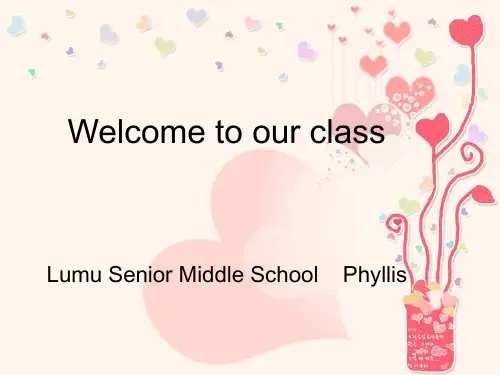
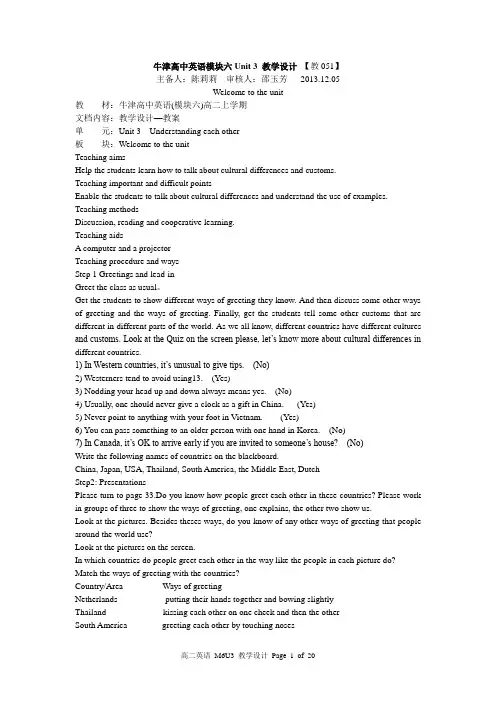
牛津高中英语模块六Unit 3 教学设计【教051】主备人:陈莉莉审核人:邵玉芳2013.12.05Welcome to the unit教材:牛津高中英语(模块六)高二上学期文档内容:教学设计—教案单元:Unit 3 Understanding each other板块:Welcome to the unitTeaching aimsHelp the students learn how to talk about cultural differences and customs.Teaching important and difficult pointsEnable the students to talk about cultural differences and understand the use of examples. Teaching methodsDiscussion, reading and cooperative learning.Teaching aidsA computer and a projectorTeaching procedure and waysStep 1 Greetings and lead-inGreet the class as usual。
Get the students to show different ways of greeting they know. And then discuss some other ways of greeting and the ways of greeting. Finally, get the students tell some other customs that are different in different parts of the world. As we all know, different countries have different cultures and customs. Look at the Quiz on the screen please, let‟s know more about cultural differences in different countries.1) In Western countries, it‟s unusual to give tips. (No)2) Westerners tend to avoid using13. (Yes)3) Nodding your head up and down always means yes. (No)4) Usually, one should never give a clock as a gift in China. (Yes)5) Never point to anything with your foot in Vietnam. (Yes)6) You can pass something to an older person with one hand in Korea. (No)7) In Canada, it‟s OK to arrive early if you are invited to someone‟s house? (No)Write the following names of countries on the blackboard.China, Japan, USA, Thailand, South America, the Middle East, DutchStep2: PresentationsPlease turn to page 33.Do you know how people greet each other in these countries? Please work in groups of three to show the ways of greeting, one explains, the other two show us.Look at the pictures. Besides theses ways, do you know of any other ways of greeting that people around the world use?Look at the pictures on the screen.In which countries do people greet each other in the way like the people in each picture do? Match the ways of greeting with the countries?Country/Area Ways of greetingNetherlands putting their hands together and bowing slightlyThailand kissing each other on one cheek and then the otherSouth America greeting each other by touching nosesThe Middle East hugging each otherStep 3 Reading1. Read a passage and know more about the different greeting ways mentioned above.Reading material:The way that people greet each other differs from one country to another, but all greetings are meant to show friendship and respect. In Japan, whether meeting someone for the first time or seeing an old friend, people usually greet each other with a bow. In Thailand, the custom is to put one‟s hands together at the chest or in front of the face, with the head bowed. In Latin countries, women often greet each other with an embrace, putting their cheeks together while exchanging greetings. In France, the way to greet friends is with a kiss on both cheeks. But possibly the most unusual way to greet a friend is the one used by Eskimos in Alaska—an enthusiastic rubbing of noses! More and more, however, the hand—shake is becoming the most popular greeting around the world. The handshake got its start in the Middle Ages, when all strangers were seen as possible enemies. When two men who didn‟t know each other m et on a road, they immediately pulled out their weapons. When they were satisfied that the other person was not an enemy, they would put their weapons away and hold out their hands in a gesture of friendship. While they were talking, they often maintained the handshake until they were sure they could trust the other person. Variations of the handshake have developed over the years. In European countries, the handshake has become so popular that it is used almost every time people get together—sometimes several times a day with the same person. In Europe, people take each other‟s hands gently and don‟t move them as much as in other parts of the world. In Arabic countries, men usually don‟t release the handshake until many greetings have been exchanged. In the United States, the handshake is used when meeting people for the first time or when greeting people on important occasions. The American handshake is usually a very strong one. Some people even think it‟s too strong.. Also, Americans move their hands up and down more than Europeans do. But whatever greeting is used—a handshake, a bow, or an embrace—we can all recognize and understand a gesture of friendship.T or F questions:1. Greetings are meant to show friendship and respect.2. Possibly the most unus ual way for people to greet each other is to put one‟s hands together at the chest.3. Handshake was first used in the Middle Ages.4. In the United States, people shake hands when they meet important people.5. The Europeans shake hands gently.2. Read another short passage about greetings and answer the following questions.What do Americans/the British/Australians like doing to show respect?When it comes to the first impression, a proper greeting is of the utmost importance. Before you group together all English-speaking people, remember there are many differences greeting manners between various countries. For example, Americans like a strong handshake that shows respect, as well as a simple greeting, ie. …Hello, nice to meet you‟. Or …Hi, my name is John.‟ On the contrary, the British prefer a brief but firm handshake associated with a formal greeting such as …Good morning, Mr Blair. How are you?‟ Australians also differ with people commonly preferring a simple …G‟ day (Good day) in casual situations. Whether you are introducing yourself to others or seeing an old friend, it is important to use the proper greeting according to thedifferent cultures and situations.Step 3 DiscussionAre these ways of greeting the same as the ways Chinese people greet each other?As a Chinese, if you are not familiar with greetings from other countries, what might happen? (Maybe we would feel embarrassed; we might be involved in awkward situations like …)Step 4: SummaryT: Today, we have discussed cultural differences and customs. And all of you have done a good job. I feel so happy with you. At the end of this class, I hope every one of you will behave properly if you get the chance to go aboard in the future!Stp5: Homework1.Read the passage in Workbook.2.Preview Reading part.牛津高中英语模块六Unit 3 教学设计【教052】主备人:陈莉莉审核人:邵玉芳2013.12.05Reading(2)Cultural differencesTeaching Aims1. Knowledge aim: Try to help students get acquaintance with cultural differences.2. Ability aim: 1) Try to develop students‟ abi lity of task based reading.2) Enable the students to master Reading strategy:understanding the use of examples.3. Emotional aim: Help students establish correct attitudes towards cultural differences. Important points1. Help students improve the cultural awareness.2. Students are to finish the related task based assignments so as to develop theirexact reading comprehension.Difficult points1. How to get students to participate the class activities actively.2. Try to help students present their ideas on the topic.3. How to write an article about cultural differences.Teaching Methods1.Fast reading to identify the related people and places.2. Paper work on the bone structure of the work and a brief summary of the topic.3. Discussion for cultural differencesTeaching Aids1. The multimedia2. Tape recorder3. The blackboardTeaching ProceduresStep1 Lead-in1.Say Hello to the students.2.Discuss the different greeting ways in different countries. Get some Ss to act out the greetings in different countries.Step2 Fast readingTask 1: SkimmimgTell the students: Besides the different ways of greeting, there are still many aspects of cultural differences, let‟s get some more information about some of them. Open books and turn to P34. Get the students to skim the text and finish PartA.Task 2: ScanningAsk the Ss to scan the article and do the following multiply choices:1. Ma Li came to the student centre .A. make some new friendsB. look for some native English teachersC. collect some information for her homeworkD. practise English2. To some Westerners, it is not to open the present as soon as you get it.A. politeB. friendlyC. commonD. impolite3. If you went to a wedding in you would not expect any alcohol.A. the USAB. the UKC. ItalyD. Brunei4. From the text we can learn that there are different ideas about goodmanners. We should always _____ wherever we go.A. do as we likeB. do as we are told toC. do as the local people doD. take off our shoesTask3: ListeningStep3 Detailed readingTask 1: Differences:Ask the Ss: Do you want to know more about their differences?Get the students to find out the specific information about the topics:presents, weddings etc.Weddings:Get the students to read to get the information about the wedding custom inBrunei.Receiving presents:Ask the students to tell how Chinese people receive presents Read the text to find out how people in the west do when receiving presents.Conclusion: There is difference in receiving presents in China and in thewestern countries.Task 2: Similarities:1. People from the western countries usually have the same attitudes towardsreceiving presents.2. People in both Brunei and China take off shoes before going inside ahouse.Step 4 Reading strategyUnderstanding the use of examplesExplain concepts and ideasSupport argumentsServe as interesting storiesStep5 ConsolidationFinish the task-based reading in EW.Step6 DiscussionHow can people understand each other‟s cultures better ?Step7 homework1. Search for more cultural differences.2. Preview the language points .M6 U3 Understanding each other牛津高中英语模块六Unit 3 教学设计【教053】主备人:陈莉莉审核人:邵玉芳2013.12.05Reading (2)I.Fast readingFinish Part A on P34II.scan the aritle and do the following multiple choice:1. Ma Li came to the student centre to ______.A. make some new friendsB. look for some native English teachersC. collect some information for her homeworkD. practise English2.To some Westerners, it is ___not to open the present as soon as you get it.A. politeB. friendlyC. commonD. impolite3. You would not expect any alcohol if you went to a wedding reception in___.A. the USAB. the UKC. ItalyD. Brunei4. From the text we can learn that there are different ideas about goodmanners. We should always _____ wherever we go.A. do as we likeB. do as we are told toC. do as the local people doD. take off our shoes【重点突破】1. I need some help on my homework ---- it‟s about cultural differences .(L1)【译译看】学生们想知道英国英语和美国英语之间的差异。
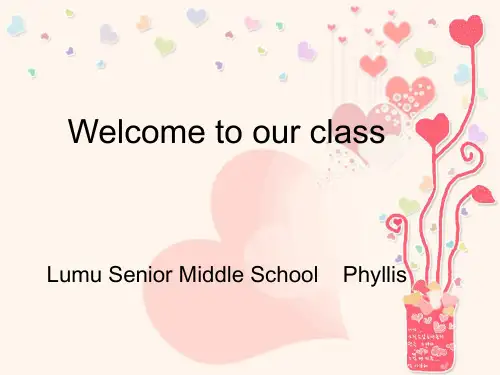
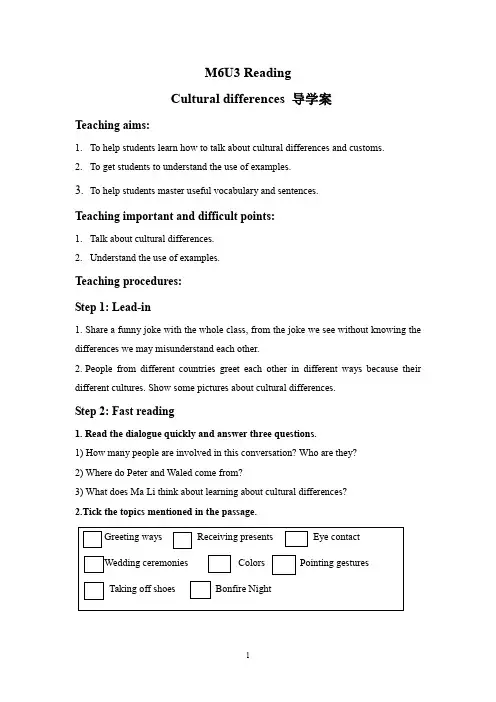
M6U3 ReadingCultural differences 导学案Teaching aims:1.To help students learn how to talk about cultural differences and customs.2.To get students to understand the use of examples.3.To help students master useful vocabulary and sentences.Teaching important and difficult points:1.Talk about cultural differences.2.Understand the use of examples.Teaching procedures:Step 1: Lead-in1.Share a funny joke with the whole class, from the joke we see without knowing the differences we may misunderstand each other.2.People from different countries greet each other in different ways because their different cultures. Show some pictures about cultural differences.Step 2: Fast reading1. Read the dialogue quickly and answer three questions.1) How many people are involved in this conversation? Who are they?2) Where do Peter and Waled come from?3) What does Ma Li think about learning about cultural differences?2.Tick the topics mentioned in the passage.Step 3: Detailed reading1. Receiving PresentsIn the West, when is it polite to open a present?2.Wedding ceremonies①Wedding in KoreaWhy do people in Korea have a rooster and a hen at the Wedding ceremony?②Wedding in BruneiQuestions:①Where do men and women sit at the wedding reception in Brunei?②What is permitted and what is not permitted at the wedding reception in Brunei ?③What else would people do at the wedding reception in Brunei ?3.Pointing gesturesPeople in many countries point with their _________. However, in Brunei that can cause ________,so people use_________.4. Taking off ShoesIn Brunei, another thing we should pay attention to is that we should take off our shoes before ________________________.5.Bonfire NightStep 4: Summary1.Different ________ to the presents.2. Different wedding __________.3. Different _________ gestures.4. Different __________.5. Different ________.Step 5: Post-reading activityWatch a videoChinese culture VS American cultureHomework1. Write a short passage about differences between the southerners and the northerners in China.2. Finish the workbook exercises.。
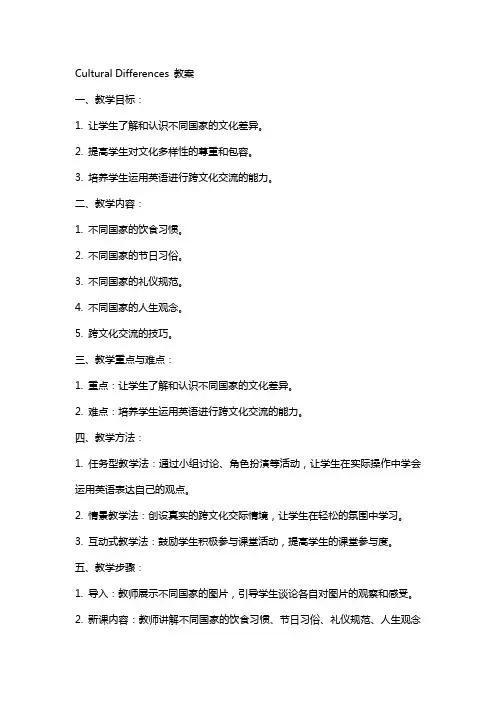
Cultural Differences 教案一、教学目标:1. 让学生了解和认识不同国家的文化差异。
2. 提高学生对文化多样性的尊重和包容。
3. 培养学生运用英语进行跨文化交流的能力。
二、教学内容:1. 不同国家的饮食习惯。
2. 不同国家的节日习俗。
3. 不同国家的礼仪规范。
4. 不同国家的人生观念。
5. 跨文化交流的技巧。
三、教学重点与难点:1. 重点:让学生了解和认识不同国家的文化差异。
2. 难点:培养学生运用英语进行跨文化交流的能力。
四、教学方法:1. 任务型教学法:通过小组讨论、角色扮演等活动,让学生在实际操作中学会运用英语表达自己的观点。
2. 情景教学法:创设真实的跨文化交际情境,让学生在轻松的氛围中学习。
3. 互动式教学法:鼓励学生积极参与课堂活动,提高学生的课堂参与度。
五、教学步骤:1. 导入:教师展示不同国家的图片,引导学生谈论各自对图片的观察和感受。
2. 新课内容:教师讲解不同国家的饮食习惯、节日习俗、礼仪规范、人生观念等,让学生了解文化差异。
3. 课堂活动:学生分组讨论,每组选择一个话题,用英语进行汇报。
4. 角色扮演:学生分组进行角色扮演,模拟跨文化交流场景,锻炼运用英语进行交流的能力。
5. 总结与反思:教师引导学生总结课堂所学,鼓励学生在日常生活中多关注和尊重文化差异。
教学评价:1. 课堂参与度:观察学生在课堂活动中的积极参与程度。
2. 口语表达能力:评估学生在角色扮演中的英语口语表达能力。
3. 跨文化交际能力:评价学生在讨论和汇报中展现的跨文化交流能力。
六、教学拓展:1. 组织学生参观博物馆或文化展览,加深对不同文化的了解。
2. 邀请外国专家或留学生来课堂分享他们的文化经验。
3. 开展文化主题的课外活动,如烹饪课程、手工艺制作等。
七、教学资源:1. 教材:选择适合学生水平的英语教材,如《Cross-Cultural Communication》。
2. 多媒体资源:利用PPT、视频、音频等资源,丰富课堂教学。

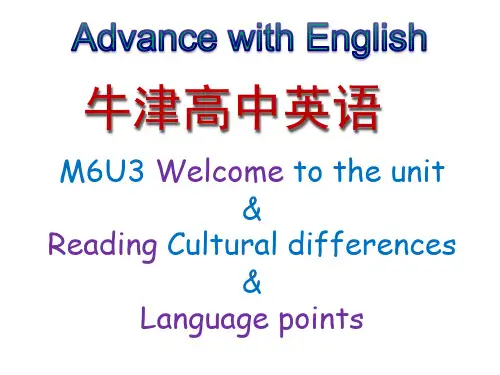
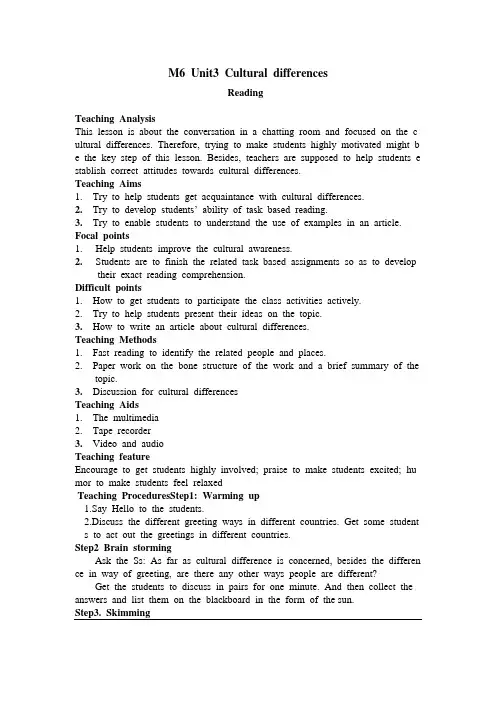
M6 Unit3 Cultural differencesReadingTeaching AnalysisThis lesson is about the conversation in a chatting room and focused on the c ultural differences. Therefore, trying to make students highly motivated might b e the key step of this lesson. Besides, teachers are supposed to help students e stablish correct attitudes towards cultural differences.Teaching Aims1.Try to help students get acquaintance with cultural differences.2.Try to develop students’ ability of task based reading.3.Try to enable students to understand the use of examples in an article. Focal points1.Help students improve the cultural awareness.2.Students are to finish the related task based assignments so as to developtheir exact reading comprehension.Difficult points1.How to get students to participate the class activities actively.2.Try to help students present their ideas on the topic.3.How to write an article about cultural differences.Teaching Methods1.Fast reading to identify the related people and places.2.Paper work on the bone structure of the work and a brief summary of thetopic.3.Discussion for cultural differencesTeaching Aids1.The multimedia2.Tape recorder3.Video and audioTeaching featureEncourage to get students highly involved; praise to make students excited; hu mor to make students feel relaxedTeaching ProceduresStep1: Warming up1.Say Hello to the students.2.Discuss the different greeting ways in different countries. Get some student s to act out the greetings in different countries.Step2 Brain stormingAsk the Ss: As far as cultural difference is concerned, besides the differen ce in way of greeting, are there any other ways people are different?Get the students to discuss in pairs for one minute. And then collect the answers and list them on the blackboard in the form of the sun.Step3. SkimmingTell the students: Now that there are so many aspects of cultural differences, let’s get some more in formation about some of them. Open books and turn t o P34. Get the students to look through the text and fill in the following blan ks.How many people are involved in the discussion? Who are they? Where are t hey from?Tell the students when we talk about cultural differences, we often cite some examples to support our ideas.Ask the students to read through the passage and find out the examples used t o state the differences.(5min)Collect the answers and fill in the first chart.Step4. Reading for detailsAsk the Ss: Do you want to know more about their differences?Get the students to find out the specific information about the topics: Thank sgiving; presents, weddings etc.Thanksgiving:When?Why?How?Get the students to find out the answers according to the text and their own knowledge. If they don’t know the teacher can give a brief introduction and s how some pictures to help understanding.Receiving presents:Ask the students to tell how Chinese people receive presents and try to act out (In Chinese better)Read the text to find out how people in the west do when receiving present. After reading, get the students to act out.Conclusion: There is difference in receiving presents in China and in the western countries.Weddings:Get the students to read to get the information about wedding customs in th e countries in Italy, the UK and Brunei. Task: Fill in the chart,Step5: Filling the diagram(attached)Tell the students: Since we’ve talked so much about cultural differences, can you help Mali to finish this piece of homework?Get the students to read through the text carefully and finish the tree diagra m.Check the answers.Step6 DiscussionDo you think it necessary to learn about cultures while learning English? How can we understand different countries cultures better?Watching moviesReading books….Conclusion: When in Rome, do as the Romans do.Step7 homework1. Please search for more cultural differences.2. Try to work out the unfamiliar words in the text.3. Finish the exercises in workbook.一. 重点短语:1. accumulate information about cultural differences 积累有关文化区别的信息2. do a piece of homework on cultural differences 做一条有关文化区别的作业3. experience cultural differences 体验文化区别4. cultural differences in the traditions 在传统方面的文化区别5. in celebration of 庆祝6. have to do with 与…有关have something/nothing/little/much to do with与…有关/ 无关/有很少的关系/有很多的关系7. give a lecture 作演讲8. join the chat room 加入聊天室9. at the end-of-term ceremony 在期末典礼上10. participate in a wedding reception 参加婚礼接待会11. serve food 端菜12. get used to 习惯于13. adjust to sth./doing sth 适应…14. take off your shoes 脱掉鞋15. log off/ out 下线 log on / in 上线16. appropriate behaviour 合适的行为17. after all 毕竟, 终究, 到底18. serve several purposes 符合几个目的19. support arguments 支持论点20. as well as 以及, 与… 一样好21. cultural misunderstanding 文化误会22. have different traditions 有不同的传统23. in other words 换句话说24. set off firecrackers 燃放烟花爆竹25. be connected to 与…有关系/有联系be connected with 与…有联系/有亲戚关系26. huge collections of artwork 大量的艺术收藏品27. be clever at 在…方面聪明28. as strong as a horse = very strong29. as busy as a bee = very busy30. as poor as a church mouse = very poor31. as cool as a cucumber = very calm32. to sleep like a log = to sleep very deeply33. be different from 不同于…34. have an ambition to do sth. 有雄心做某事35. take up a lot of time 占据很多时间36. go through a. 仔细阅读 b.经历(时间或阶段) c. 穿越37. go on a boat 上船38. get held up 被阻止39. have its origins in 起源于, 源自40. the person concerned 有关的人41. in contact with 与…接触41. greet one another with a firm handshake 相互紧紧地握手打招呼43. stand close to them 靠近他们站着44. different ethnic groups 不同的种族45. research on 做有关…的研究46. for yourself 亲自47. live in small family groups 以小家庭单位居住48. join in with49. have an opportunity to do sth. 有机会做某事50. listen to traditional accounts of bravery 聆听传统的英勇故事51. believe in animal spirits 相信动物灵魂52. on Earth = on the earth 在地球上53. hunt for/ after 追猎;搜寻54. get to learn about sth. 逐渐了解到55. hunt animals 狩猎56. be home to …的家园57. be rich in 在…方面富裕58. meet with 遇到, 碰到59. go night fishing 夜间捕鱼60. belong to 属于61. be known as 作为…而闻名; 名叫62. smoke a peace pipe 抽和平烟斗63. roast sth. over an open fire 在篝火上烤。
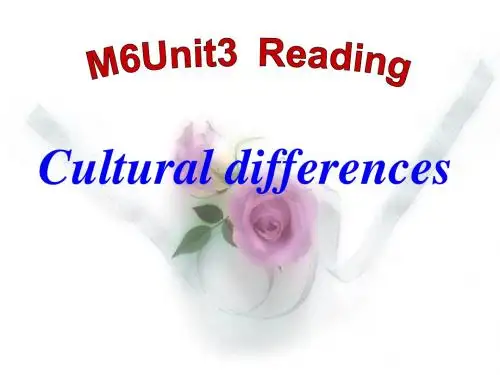

Unit 3 Understanding each other主备:Mrs Lijing审稿:高二英语备课组Teaching content(教学内容):Reading 1Learning aims(学习目标):1.learn how to talk about cultural differences and customs;2.understand the use of examples;3.master useful vocabulary and sentences.Important and difficult points(重难点):Learn the differences of the different culturesEmotional goals(情感目标):It is necessary to know the differences among different cultures. So we see without knowing the differences we may misunderstand each other.Teaching procedures(教学步骤):Preview (课前预习)Reading New words and main idea of the passage一、Revision(复习)Show some pictures about cultural differences. Let the students understand the differences of culture in different countries.二、Lead-in(导入)1、Have a free talk about greeting in different countries with the whole class.2、Ask the Ss to answer the questions in Part A (小组展示)三、New lesson(新课)(A)Question:Why do you think people in different countries greet each other in different ways?(B)Fast reading:Please go through the dialogue quickly and then answer several questions.1. Which country is Waled from?2. Where does Peter come from?3.What does Ma Li think about learning about cultural differences?(C) Pick out the topics mentioned in the dialogue:differences between Americans and Brits(√)1、eye contact()2、open presents ()3、wedding traditions()4、table manners ()5、gesture of pointing ()6、take off shoes before entering one’s house()7、color of clothing ()8、particular festivals()(D)careful-readingCheck up your understanding and fill in the table.(E)Benefits of learning cultural differences:—to experience different cultures;—to get a better understanding …;—to help strengthen relations with …;—to avoid unnecessary mistakes and embarrassment;—to communicate freely and effectively;—to be a polite person(F)Which of the following words indicate the right attitudes towards cultural differences?A.respectB. tolerateC. look down uponD. appreciateE. hateF. understandG. refuse四、Preview(课后预习)Reading五、Homework(课后作业)1. Please search for more cultural differences.2. Review what we have learnt today.3. Finish the exercises Parts C1 and D on P36.六、Reflection(课后反思)。